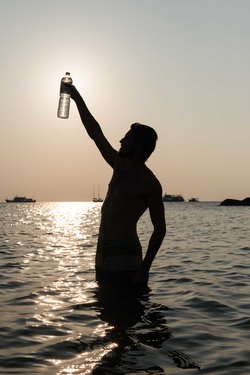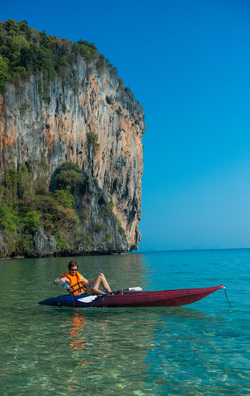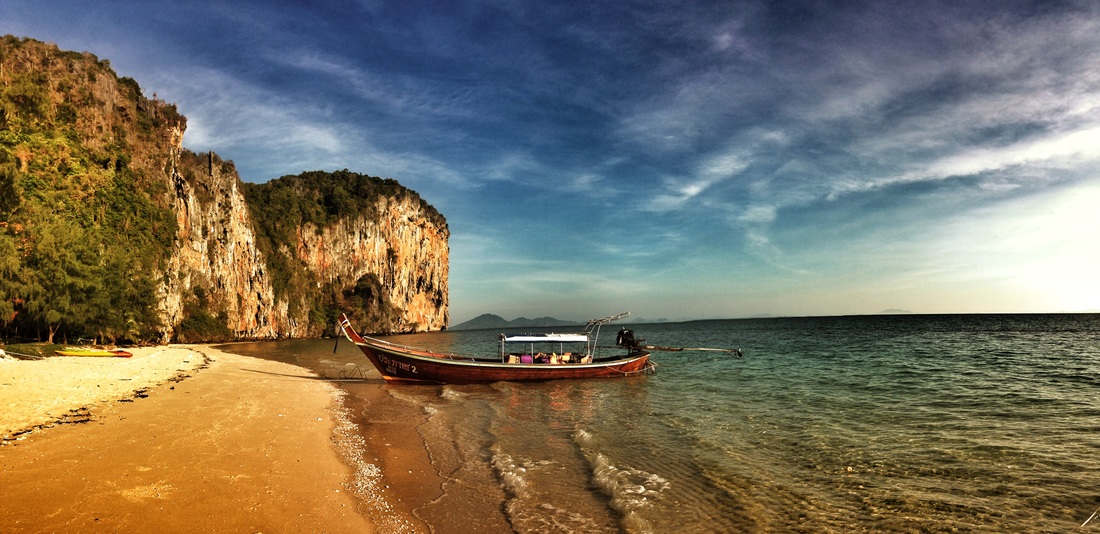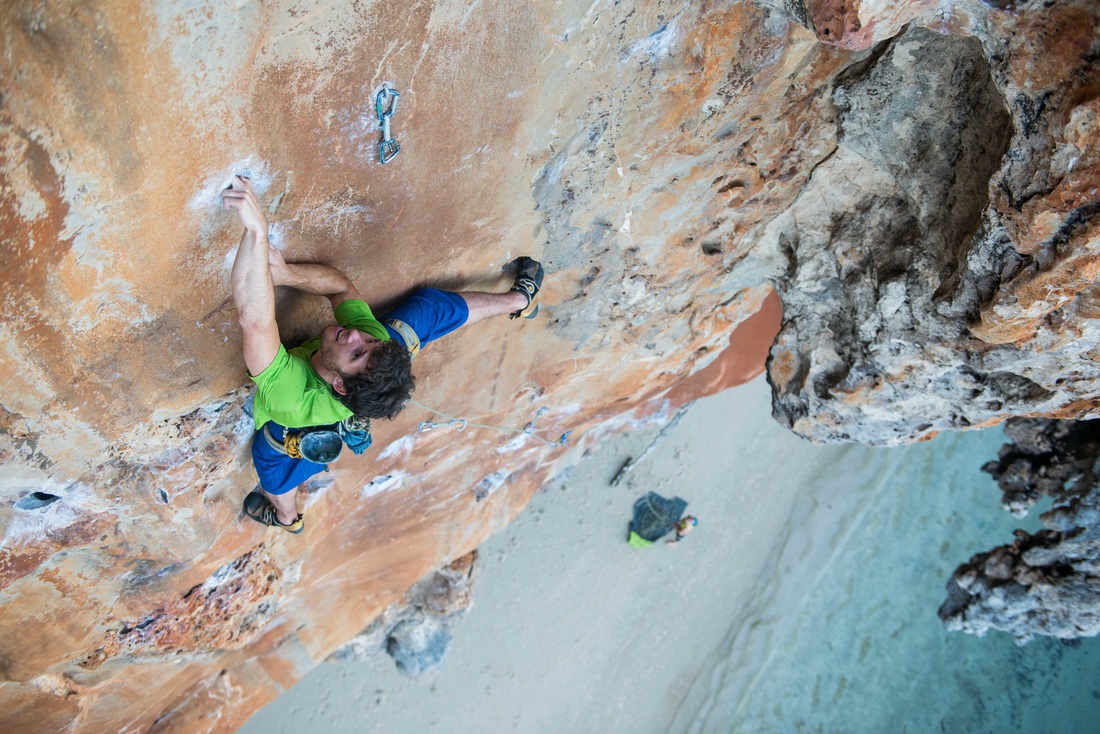ASC Microplastics Adventurer
Tightening the cap, I look around. A hundred yards to the west, a white sand beach is framed by the towering limestone cliffs of Koh Lao Liang Nong, or “Little Brother Island.” Across the blue expanse to the east, the 3,500-foot peaks of the Nakhon Si Thammarat Range rise above the coast.
 Jones samples Sairee Bay, Thailand. (Photo by Matt Cline)
Jones samples Sairee Bay, Thailand. (Photo by Matt Cline)
First, we traveled north by train to the ancient city of Chiang Mai for a taste of Thai climbing at Crazy Horse Buttress. Also during our stay there, we rafted a steep, rocky stretch of the Mae Taeng River, one of several that originate in the mountainous heart of the Chiang Mai province. Although i
t would be weeks until I capped my first one-liter sample, microplastics swirled around my mind like the North Pacific Gyre. High up in the Thong Chai Range, plastic debris accompanied us on the Mae Taeng as we floated through thick jungle alongside the open bamboo huts of the hill tribes. This debris will flow into the Ping, then the Chao Phraya, and finally into the Gulf of Thailand—perhaps even ending up in my marine samples.Microplastics, which are petroleum-based particles less than five millimeters in size, are toxic and pose a serious environmental problem in aquatic ecosystems. These small but deadly particles come in two flavors: primary microplastics are manufactured for direct use such as threads in nylon clothing or beads in cosmetic products; secondary microplastics are derived from the breakdown of larger plastic debris over time. Toxins such as DDT and BPA adhere to the particles and travel up the food chain in increasing proportions through a process called biomagnification.
This was on my mind weeks later when we ate fresh fish on the banks of the Mekong River in Thakek, Laos. As the Laotian fisherman skewered his catch with bamboo shoots and tossed it on hot coals, another tourist assured us that, due to the lack of upstream industrial activity, the fish were clean. But was he aware of the omnipresence of microplastics? The vast majority of samples in this study—over 90 percent—have tested positive. Would he be able to guarantee the lack of toxic-laden particles in the chocolate-brown Mekong, and better yet, my dinner?
We returned to Thailand with fresh visas and traveled south to the coastal provinces of the Malay Peninsula. The karst topography of the Tenasserim Hills Range is astounding: endless limestone towers dot the region, forming a skyline resembling an economic graph. Its rise and run reveal the geologic history of boom and bust as an ancient ocean accumulated organic remains and dried up millions of years ago.
From the Gulf of Thailand we boarded a ferry to Koh Tao, the northernmost island in the Chumphon Archipelago. Although the paradisiacal volcanic remnant is known for its diving and granite rock climbing, my excitement was focused on water samples. I waded chest-deep from a pile of rounded boulders into Sai Ree Bay at sunset, following protocol. I made note of the time, wind speed and water temperature, and took a GPS reading.
 Jones sampling Koh Lao Liang, an island in the Andaman Sea. (Photo by Matt Cline)
Jones sampling Koh Lao Liang, an island in the Andaman Sea. (Photo by Matt Cline)
As I collected my final sample from Koh Lao Liang Nong’s calm bay, the gentle rocking of my kayak echoed the ebb and flow of my thoughts. I pondered the impact my samples might have on microplastics at the macro level. Individually, my contributions won’t clean up the oceans. But the act of sampling and raising awareness can spread like the very particles ASC is working to understand.
My words collect like runoff and flow into a rivulet, informing those near me, who become conscious of their plastic usage. As behaviors change, the ideological tributaries converge and flow into the collective conscious of the human ocean. And with a critical mass of samples, ASC will have information with which they can affect change on a larger scale.
Analysis of my samples resulted in a total of 13 microplastics counted at an average of 4 pieces per liter. There was some good news, however: the sample collected off the Lao Liang islands was free of microplastics.
I felt a relieving peace as I recalled the abundance of marine life thriving among the islands’ healthy reefs. In a world where the heavy impact of Homo sapiens is far spread, it’s comforting to know there are still places that are unharmed.
the Field Notes blog, and our Facebook, Twitter, Instagram and Google+ pages.




